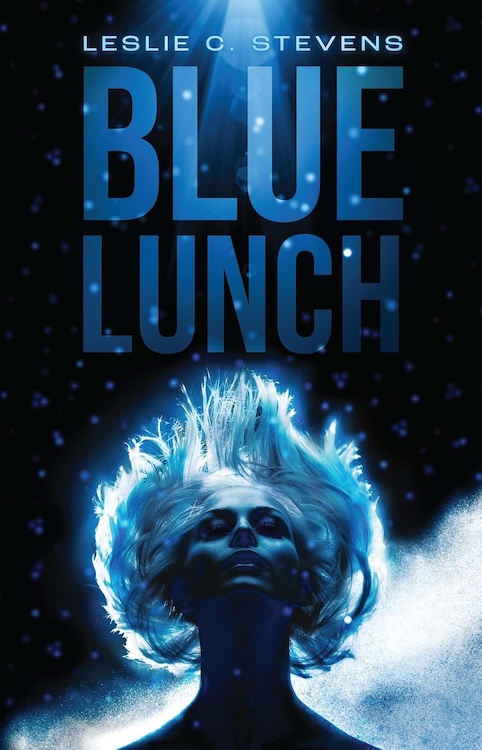posted: August 3, 2024
tl;dr: A decent debut pulp science fiction book, assuming you like the characters...
Disclaimer: I know the author of this book, a relative by marriage. Normally if I read a book by someone I know and it is no good, I don’t bother reviewing it in public. So, this book cleared that hurdle.
I don’t read a tremendous amount of science fiction. My favorite, currently active, sci-fi authors are Neal Stephenson (Snowcrash and Cryptonomicon are my faves) and William Gibson. Other favorites of mine from the past include Ray Bradbury, Arthur C. Clarke (whose 2001: A Space Odyssey is a masterpiece in both movie and book form), and humorist Douglas Adams. Frank Herbert’s Dune is a great book, and a great first book which he spent many years writing (his later volumes were not incubated for that long, and aren’t as well known). I don’t read enough science fiction to delve much into the “pulp” category.
I wouldn’t put Leslie C. Stevens’s first book Blue Lunch in the same category as those books and authors, but those who read a lot of science fiction, especially of the pulp variety, may find it enjoyable. A lot will depend on how much the reader enjoys the characters in the book. Certainly the lead character, Clayton “Fitz” Fitzugh, has appeal as a no nonsense, risk-taking hero who also is smart enough to solve a problem that has baffled physicists for decades. His romantic interest may or may not share some characteristics with the author’s wife; at a minimum their nicknames are similar. Guessing how much of the book is based on events and people in real life is one of the fun aspects of reading a book by someone you know. The author’s interest in food, which I can attest to, definitely comes across strongly.

Character development matters a lot in a book or movie. It is one of the reasons that the Star Wars franchise has been going strong for decades. For a variety of reasons, people enjoyed the characters in the original films: Luke Skywalker, Princess Leia, Obi-Wan Kenobi, Han Solo, Chewbacca, the droids C-3PO and R2-D2, and the evil Darth Vader. As for the science in the science fiction movie Star Wars, there certainly are devices that don’t exist in our world today, but science is not a major focus. It creates the setting for what is ultimately a movie reminiscent of Westerns, with a battle between good and evil. “The Force” is more important than all the futuristic science portrayed in the movie, and there is no scientific explanation provided for “The Force”. It’s the characters and storyline that matter most in Star Wars, not the science.
I actually like a bit more science in my science fiction, which is one of the reasons why I rank 2001: A Space Odyssey over Star Wars. Arthur C. Clarke’s epic accurately predicted important aspects of space travel and artificial intelligence, and can make a claim to have demonstrated the first iPad in 1968, decades before the first one actually appeared. As he did in Termination Shock, Neal Stephenson will often take a few technologies that scientists and engineers are currently developing, research them thoroughly, extrapolate them into the future assuming that they work out, and then write a story about how human beings behave when those technologies exist. Stephenson doesn’t often rely upon magic; usually, everything obeys the laws of physics as they are understood today.
There are some aspects of the science in Blue Lunch that aren’t explained well enough to give the reader confidence that they are actually possible. I never fully understood what the scientists were doing to the whales, and why that was a necessary component of what they were building. It was also hard to visualize the whale scenes based on the descriptions provided. So a certain amount of suspension of disbelief is required when reading Blue Lunch, more than I normally like.
In some ways Blue Lunch reads like a screenplay, and could easily be made into a movie with some great CGI action sequences. That would certainly solve some of the problems I was having visualizing in my mind what was happening in the book.
I give credit to Stevens for a decent first effort. The bottom line on Blue Lunch is that you’ll enjoy it if you enjoy the characters, and that is hard for me to predict.